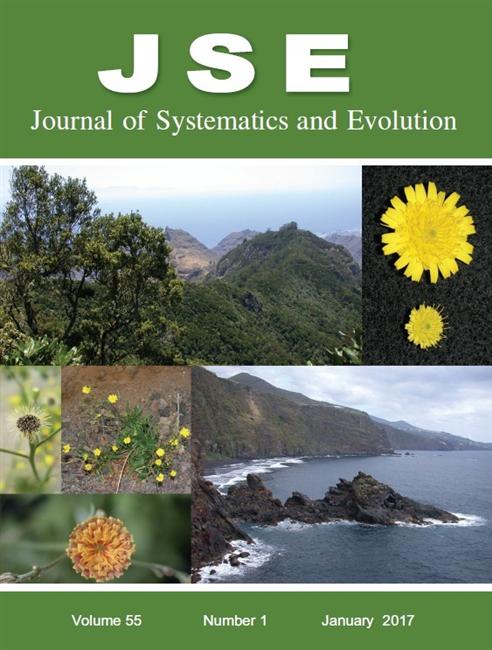

The Journal of Systematics and Evolution would like to acknowledge and thank the following reviewers for their contributions in the period January 1‐December 31 in 2016:
| Allen, Geraldine | Hotta, Kohji | Sigel, Erin |
| Anderson, Gregory | Huang, Lu‐Qi | Sinn, Brandon |
| Archer, Robert | Huang, Shuang‐Quan | Soejima, Akiko |
| Barrington, David | Huang, Yong‐Jiang | Soltis, Pamela S. |
| Bogunić, Faruk | Jin, Xiao‐Hua | Song, Zhi‐Ping |
| Cao, Jun | Jurczyk, Barbara | Sonnante, Gabriella |
| Cardoso, Domingos | Kallersjo, Mari | Spalik, Krzysztof |
| Chen, Kangming | Kano, Rui | Srivastava, Alok |
| Chen, Li‐Juan | Knapp, Sandra | Stevens, Peter |
| Chen, Zhi‐Duan | Kong, Hong‐Zhi | Stuessy, Tod |
| Cires, Eduardo | Lashermes, Philippe | Sun, Miao |
| Crespi, Antonio | Li, Jie | Sun, Yong‐Shuai |
| Das, Sudripta | Liao, Wan‐Jin | Tarkhnishvili, David |
| de Groot, Arjen | Lin, Zhenguo | Testo, Weston |
| Dobeš, Christoph | Liu, Hong‐Mei | Thiv, Mike |
| Dubuisson, Jean‐Yves | Liu, Jian‐Quan | Tippery, Nicholas |
| Ebihara, Atushi | Liu, Ping‐Li | Van der Meer, Sascha |
| Edger, Patrick | Lu, Bao‐Rong | Vidal‐Russell, Romina |
| Ekrt, Libor | Ma, Hui | Wang, Heng‐Chang |
| Elster, Josef | Ma, Jian‐Chao | Wang, Hong |
| Endress, Peter | Mehltreter, Klaus | Wang, Hong‐Wei |
| Ercisli, Sezai | Milstein, Daniela | Wanke, Stefan |
| Esser, Hans‐Joachim | Murakami, Noriaki | Watkins, James |
| Francisco‐Ortega, Javier | Nie, Ze‐Long | Xiang, Qiu‐Yun (Jenny) |
| Gao, Lian‐Ming | Oh, Sang‐Hun | Xu, Feng‐Xia |
| Ge, Xue‐Jun | Paule, Juraj | Yang, Ze‐Feng |
| Gibby, Mary | Potter, Dan | Yin, Zhi‐Tong |
| Gong, Xun | Qi, Xinshuai | Zhang, Dian‐Xiang |
| Gu, Hong‐Ya | Qiang, Sheng | Zhang, Li‐Bing |
| Guo, Jie | Qiu, Ying‐Xiong | Zhang, Ming‐Li |
| Guo, Ya‐Long | Regalado, Ledis | Zhang, Ning |
| Guo, You‐Hao | Rimington, William R. | Zhang, Ti‐Cao |
| Hadadinejad, Mahdi | Salino, Alexandre | Zhang, Xian‐Chun |
| Harris, AJ | Salmaki, Yasamin | Zhao, Yun‐Peng |
| Hauenschild, Frank | Schmidt‐Lebuhn, Alexander N. | Zhong, Bo‐Jian |
| He, Chao‐Ying | Schneider, Harald | Zhou, Ren‐Chao |
| Herendeen, Patrick | Schori, Melanie | Zimmer, Elizabeth |
| Shan, Hong‐Yan | Zou, Xin‐Hui |